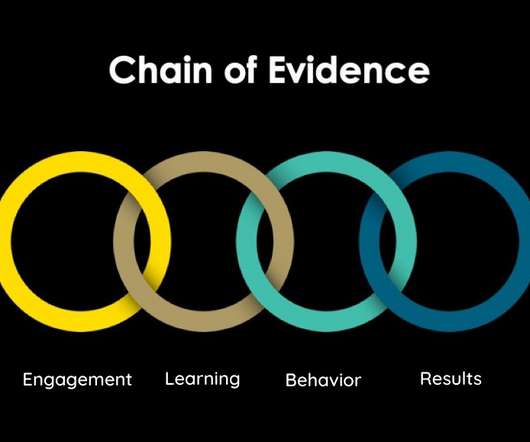Kirkpatrick Revisited | Social Learning Blog
Dashe & Thomson
APRIL 17, 2011
I have included Kirkpatrick’s Four Levels of Evaluation in every proposal I have ever written, and I wanted to hear from Kirkpatrick himself regarding his take on the current state of evaluation and whether his four levels are still viable. Kirkpatrick is now saying that we need to start with Level 4.




























Let's personalize your content